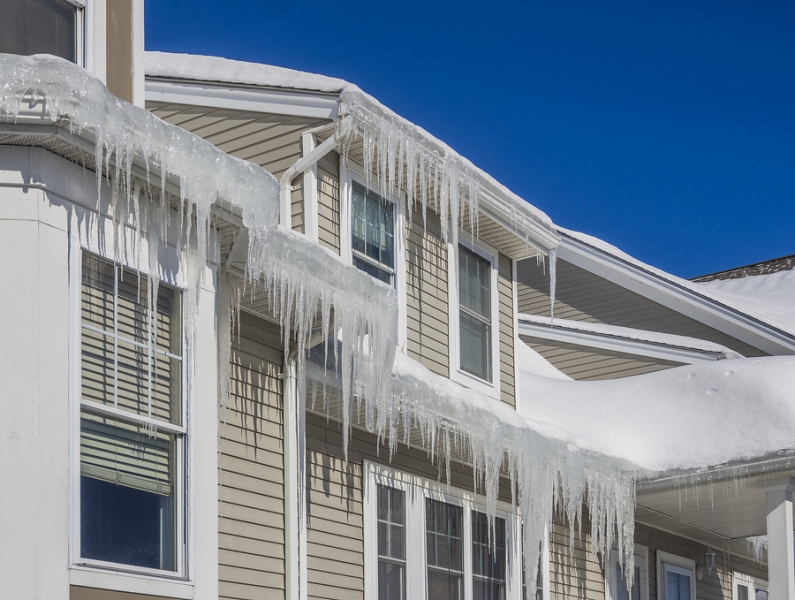Ice Dam Removal & Mold Repair
 Winter is a time of joy and beauty for many. But while we are busy enjoying the amazing winter views, snow plays a role in the formation of ice dams. And ice dams can have disastrous effects for your house, leading to mold and damage.
Winter is a time of joy and beauty for many. But while we are busy enjoying the amazing winter views, snow plays a role in the formation of ice dams. And ice dams can have disastrous effects for your house, leading to mold and damage.
What Is An Ice Dam?
Ice dam is the term used for the rim of ice that develops on the boundary of your house’s roof. The temperature is usually lower on that rim, a factor that aids in the formation of ice and delays its melting.
The Cause of Ice Dams
To understand the cause of ice dam formation, one must understand what the roof represents. It represents a system comprised of various components, such as soffits, eaves, underlayment, ventilation, attic insulation, and shingles. These components form a system that works together to provide your home with the protection it needs. A system which works efficiently will drive water away from the house. But when this system in the roof develops certain problems — mainly due to inefficient ventilation in the attic –it can cause the indoor heat to rise and flow through the ceiling towards the attic itself. This in turn warms the surface of the roof.
The snow that is deposited on this heated part starts to melt and flows down to the area below, which is below the freezing point. This in turn causes the water to accumulate and freeze on the edge. This entire process of the melting, flowing, and freezing is known as ice dam.
Damage to Structure
Once the water has accumulated, and has frozen again, it begins to expand. This expanding ice, as a consequence, can become trapped in the gutter and roof materials, as well as in the shingles. This results in structural damage because materials become weak, and components become dislodged.
Water Leaks and Mold Problems
Once the ice dam takes forms, water accumulates behind it forming a pool which keeps expanding. Once that pool begins to grow, the water makes its way towards the covering of the roof and starts to flow under it. As a result, this water reaches the attic, and the problem can get out of hand. This water then seeps through the walls, ceilings, insulation, and other areas. Once this moisture becomes trapped inside, it results in significant damage which begins to manifest as bad odor, rotting material, and mold.
Choices available to homeowners
The best way to prevent ice dams is to get the snow off the roof. This, however, is not as easy as it sounds, and it can be a dangerous task. Thus it is wise to analyze the condition thoroughly, and consider professional help to correct issues with your roof system.












